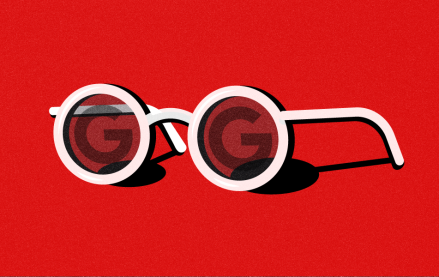Escaping the algorithm: Why young football fans might turn their backs on the biggest social publishers

by James Kirkham, head of COPA90
Young football fans are coming of age in a paradoxical environment. They’re priced out of the live game, yet social platforms have given them unlimited access to football content and players.
Most 16-to-24-year-olds got their first introduction to football through FIFA video games, blurring the line between real and virtual clubs. They reject traditional broadcast models and often support more than one club. They’ve also created and embraced a new fan experience by turning the action on the field into social “moments” — the memes and GIFs that have become an established part of the football lexicon. But a new shift in fan behavior is coming — one that brands ignore at their peril.
Young fans, hungry for fresh and authentic football content, are turning away from an established style of publishing on social platforms like Twitter and Instagram. This is what the young people we surveyed told us as part of our recent research into the passions and values of the modern football fan. COPA90’s Modern Football Fan report shows that brands can no longer rely solely on shared social media content to engage fans.
Memes, GIFS and emojis have become just another means of communication. A massive 42% of 16-19-year-old fans in the UK regularly share football-themed memes or funny videos, according to our research. Other generations are starting to follow suit, with even the over-50s watching and sharing looping goals as GIFs on Twitter. They’ve become part of the online discourse, along with the banter around every minute of gameplay. But as exciting moments in football are continually rehashed through memes, it’s harder than ever to create a piece of content that stands out. Publishers are at risk of becoming indistinguishable from each other.
Fans are turning away from cluttered news streams. That’s in part because content creation is no longer the domain of an elite few. One in five 16-24 year-olds now create and craft their own graphics, GIFs, image reactions or memes, our report found. On April 3 of this year, 6,881 videos focusing on Cristiano Ronaldo’s bicycle kick goal in Real Madrid’s Champions League quarter-final match were created by 5,622 accounts and posted on Twitter and Instagram, according to our analysis. The days when a single brand could own the social moment, like Oreo did with its “Dunk in The Dark” Super Bowl tweet in 2013, feel a long way off.
At the same time, young fans voice concern about trolling and are wary of attracting negative comments on public posts. This is driving many of them to more private online environments, such as WhatsApp, in their search for a social safe haven where they can air their views without fear.
Clubs have jumped on the meme bandwagon as well. Some content, such as Bristol City’s much lauded goal GIFs, manages to be clever and tongue-in-cheek. But when clubs of all sizes get involved, it’s an indicator that meme marketing may have reached its peak. Social reaction happens in an instant; carefully crafted and pre-planned content no longer has the same relevance to fans.
Without even noticing it, we’ve all become slaves to big social players like Twitter and Instagram, and the algorithms that power them. This has fueled brands’ and agencies’ obsession with getting likes and retweets. But now, as the cacophony of content reaches a fever pitch, it’s clear that young football fans are pursuing something fresher and more vital.
The fans we surveyed told us that they wanted, as they put it, to “escape the algorithm.” They are looking for an entirely new approach from social networks and those who engage with them. They don’t want everyone saying the same thing at the same time about the same moment. They want more varied content.
Social platforms are starting to feel the effects of this. As communities rebel against pre-ordained algorithmic control and group together around their passions, new social apps like Vero are thriving. Vero’s downloads jumped from fewer than 150,000 to 3 million in March, driven by users’ search for a more authentic form of self-expression.
Meanwhile, Snapchat’s ability to retain what was always fresh and exciting about its visual language could wind up saving it. Its redesign may have dented the platform’s pace of growth, but its original content will help keep core users loyal.
Earlier this year, Facebook announced it wanted its news feed to create more “meaningful interactions,” and to prioritize content shared by family, friends and groups over that from businesses and media outlets. Time well spent is now more vital than just time spent. That brings true craft back into play. Could we finally be on the cusp of an era where content experiences are designed to live long in our memory, instead of disappearing from our consciousness as soon as we’ve hit the ‘like’ button?
Instagram has just announced that it too is focusing on quality over quantity when it comes to the amount of time users devote to its platform. Its CEO, Kevin Systrom, has said that any time spent on Instagram “should be positive and intentional.”
Brands have a major opportunity here, so long as they’re able to inspire a real emotional response from their audiences and find their purpose in the sport – be it promoting equality, adding value to fans’ lives or to their experience of football and the culture around it, or just bringing them closer to the game. That’s what the fans are telling us.
More from Digiday

The AI hype cycle is rewriting ad tech’s M&A math
As talk of a dot-com-style AI bubble grows louder, buyers are shifting from growth-at-all-costs to consolidation and cleanup.

The accidental guardian: How Cloudflare’s Matthew Prince became publishing’s unexpected defender
Cloudflare’s day job is fending off botnets and nation-state cyberattacks, not debating how Google and other AI firms crawl publisher sites.

Omnicom Media kicks off CES with a Google search partner that drills deeper into intent
Omnicom is working with Google to create a new tool that empowers brands with far deeper insights into how to use search in the AI-powered era, given that historical notions of search marketing have flown out the window.





